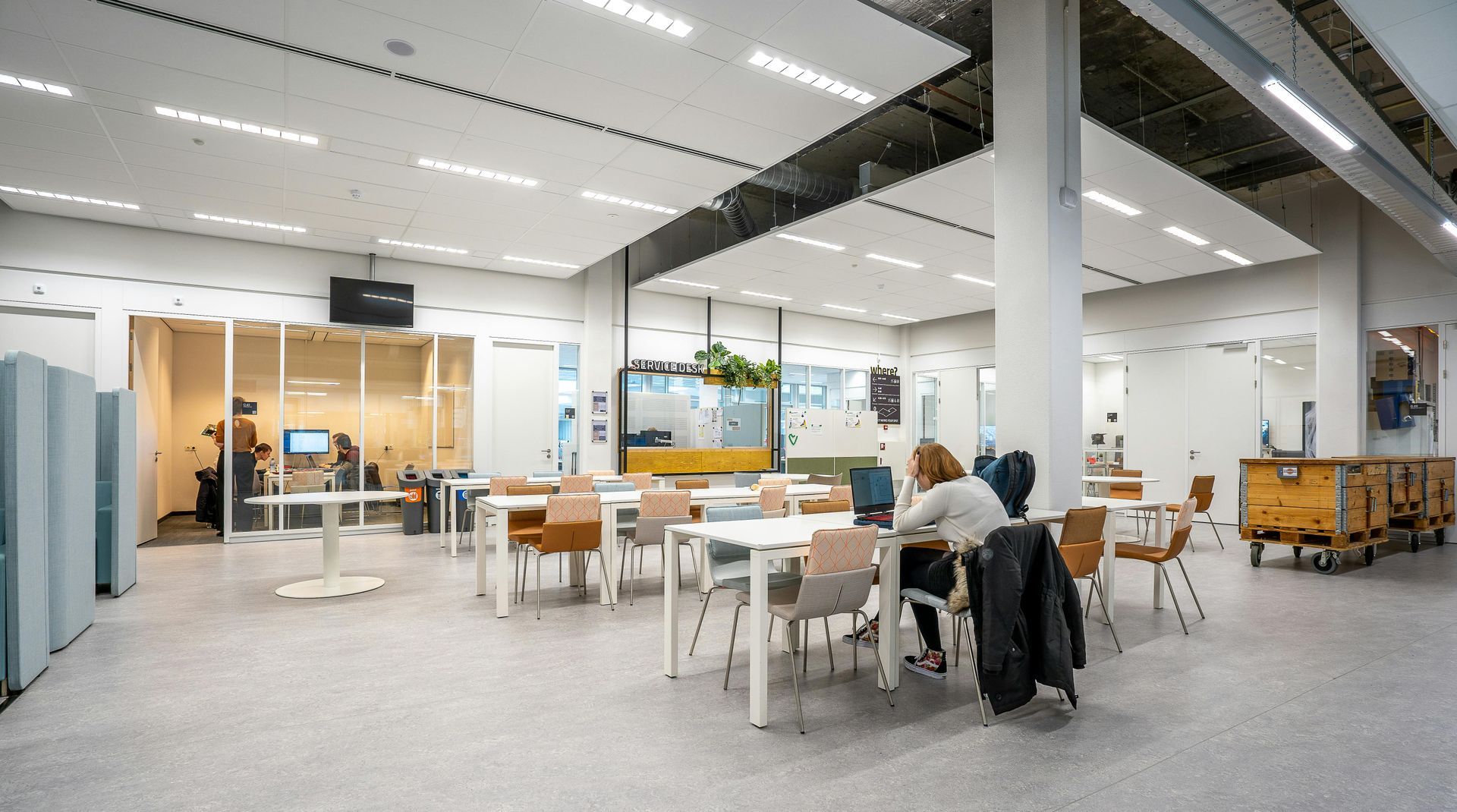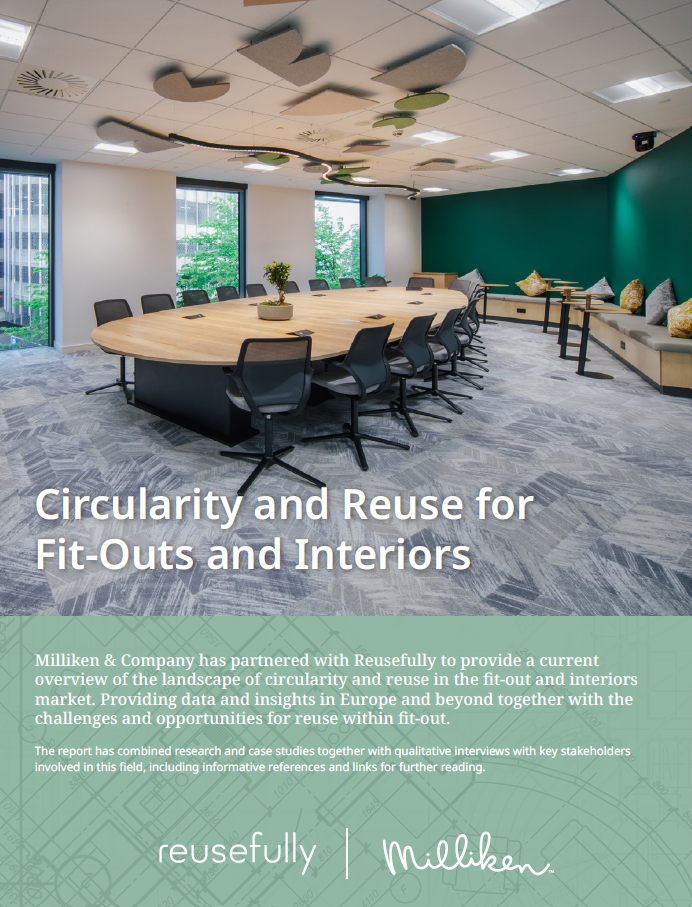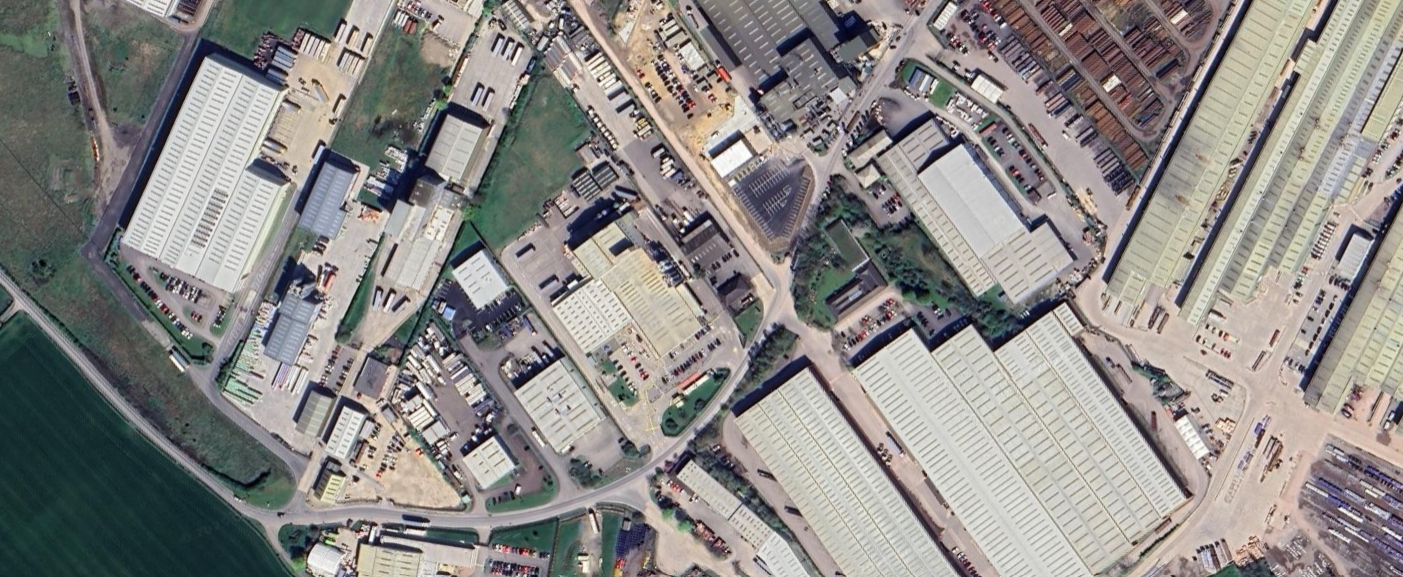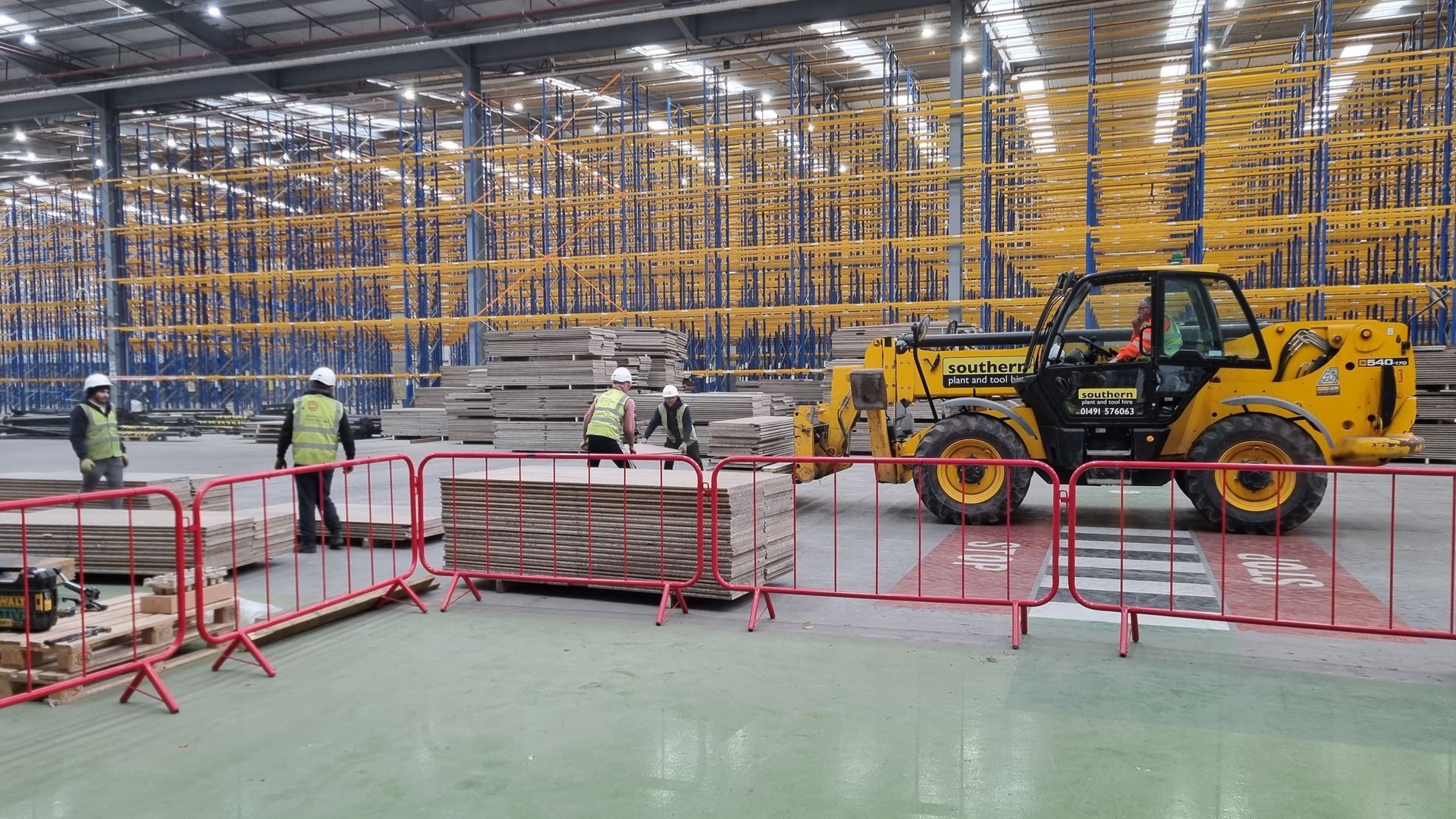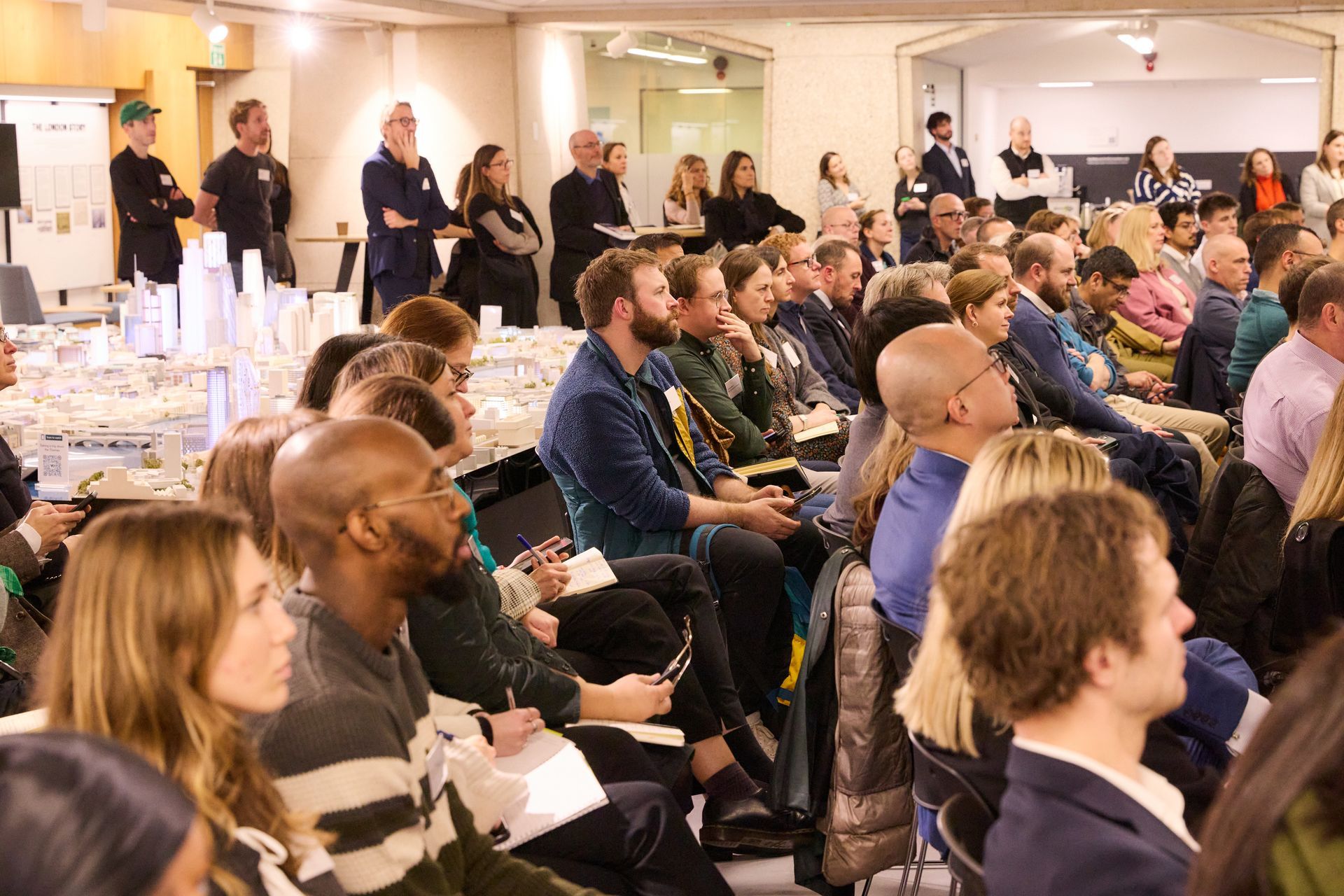We spend 80-90% of our time indoors, and the workplaces, leisure spaces and retail outlets we use are of fundamental importance to our lives, our health, wellbeing and our economy. However the market that supports the creation and management of interior spaces is highly wasteful and carbon heavy.
Fit-out alone is thought to be responsible for 300 tonnes of waste going to landfill per day in the UK. Much of this waste is arising from the strip-out phase, with many products and materials being fit for reuse or high-value recycling but typically sent to low-grade recycling or energy from waste routes, rather than retaining their inherent value.
Overbury’s
“Counting the Upfront Carbon in Cat B Office Fit-Out Report” (2024)
estimates the average upfront carbon performance level of Cat B office fit-out as 190kg CO2e/m2 GIA. Overbury uses LETI (Low Energy Transformation Initiative) Band D carbon targets for offices as a comparison at 775kg CO2e/m2 GIA for shell and core.
It’s a startling fact to consider that
a Cat B fit-out can quickly produce a higher cumulative carbon than the original building, if its fitted out more than 5 times in its lifetime.
There are particular aspects and practices associated with both CAT A and CAT B fit-outs that will amplify the production of waste. In some CAT A buildings, tenants will simply want to remove items that the landlord or developer has included without even being used, and that removal is often done quickly and at a high environmental cost (i.e. zero reuse and often very little recycling). Landlords might also do a CAT A+ fit-out, whereby parts of a building (say a single floor of a building) are fitted out more akin to a CAT B standard, and then again those items are removed and wasted when the tenant moves in. This can, on some occasions, lead to the complete waste of brand new or unused materials and products.
In a perfect world, reuse would be synonymous with fit-out, and reuse would be the first choice for all product selection with spaces being designed to ensure products are reused over and over again. However we don’t live in a perfect world and we are still a long way from this.
But what is needed to scale this and make reuse the first choice in all fit-out projects? The responsibilities and actions lie with all of us involved in the manufacture and supply of products, design of spaces, fitting out spaces, and who own, manage and occupy these spaces. Responsibilities also lie with those that hold the levers to drive action - local and national governments, planning authorities and investors, with an environmental imperative to act. So what can we do?
Here’s an eight-point plan for setting us off on the road to making fit-outs and interiors more circular:
- Clients and design teams need to play a bigger role: Put simply, if the client asks for reuse, it will happen. This needs to be made clear in project briefs and contracts with a greater understanding of any potential increases in time and resource (and cost) for careful disassembly. The cost of reuse needs to be better understood, this includes the trade-offs for any careful disassembly, testing, storage and logistics. Designers need to be inventive and open-minded, using a reclamation design and inventory-led approach. Not everything needs to look the same; smaller spaces and zones can be designed with different reused materials such as boardrooms, break out areas etc. Confidence in the use of these materials, particularly where there are strong aesthetic demands needs to be clearly demonstrated. A second-hand item can and should be a well-loved item and not seen as inferior to new.
- We need to rethink warranties: Are warranties always needed? And for how long? How often do companies claim against warranties for interior products? Flexibility is needed as well as models that provide these warranties for reused products ensuring that they meet performance criteria. This may mean the development of protocols for testing and assurance.
- More material passporting: Providing information which lives with the product i.e. product passports will aid future reuse, reduce uncertainties and the time it can take to find out this information. This should be a given with all interior products placed on the market. Moreover, this information needs to be maintained and accessible – for this to happen the value of the information needs to be communicated.
- Rethink the business model: Leasing of items to match the lease of the fit-out, should be a viable model. Leases can be as short as 1 year in some cases – there is plenty of life left in many products; and manufacturers/suppliers can save money and resources by leasing these products again and again and not manufacturing new every time. Moreover, spaces should be designed with the next lease (lifecycle) in mind.
- Understand the real costs of reuse: The cost of reuse needs to be better understood especially in comparison with new products over more than one lifecycle and linked to carbon pricing. Building owners and tenants should have a good appreciation of the financial and carbon value of their products.
Circular Economy Week 2025 – Making it Happen
Our theme for this year for ReLondon’s Circular Economy Week 2025 was ‘Making it Happen’, how we address the circularity and reuse challenges for the interiors sector. We hosted an online webinar on the subject of making fit-outs and interiors more circular.
Introduced by our Katherine Adams, we heard from an excellent group of speakers. Elina Grigoriou, of Grigoriou Interiors, described the latest update to the SKA rating scheme which provides a framework to drive the sustainability and circularity of fit-out projects. Ray Molony spoke about the End Cat A Lighting Waste campaign and Recolight reuse scheme for the lighting industry.
James Ivin of Overbury provided a contractor’s perspective on the practical realities of reuse, and what is needed to make this happen at greater scale.
You can download a copy of the speaker presentations from the event
here
- Manufacturers need to step up: Manufacturers need to be making ‘circular’ products. This is not only through the sourcing of renewable, reused and recycled raw materials and designing for end of life but also includes being able to reuse and recycle these products in the future. How different components can be separated from each other is a key consideration.
Ban materials that can’t be reused! Should fit-out products be allowed on to the marketplace if they are not reusable and/or recyclable? Manufacturers can take more responsibility for their products when they reach the end of their first life. However, this is not always easy - manufacturers need to have a better understanding of what happens to their products when they are removed from buildings.
- Use new technology: Utilising technology for the visualisation of space may help with the reduction of waste from removing items from a CAT A where the tenant wants changes. Technology is developing rapidly when it comes to scanning buildings and identifying products.
- Share, share and share!: We need to share the good news stories – this provides confidence that reuse and circularity can work; but we can also sometimes learn from why it did not work, we should equally share these findings. While it would be nice to do everything on every project this is not feasible. It is important to start with the quick wins, provide confidence to the project team and make this business as usual.
Finally, below are some useful links and useful sources of related information:

